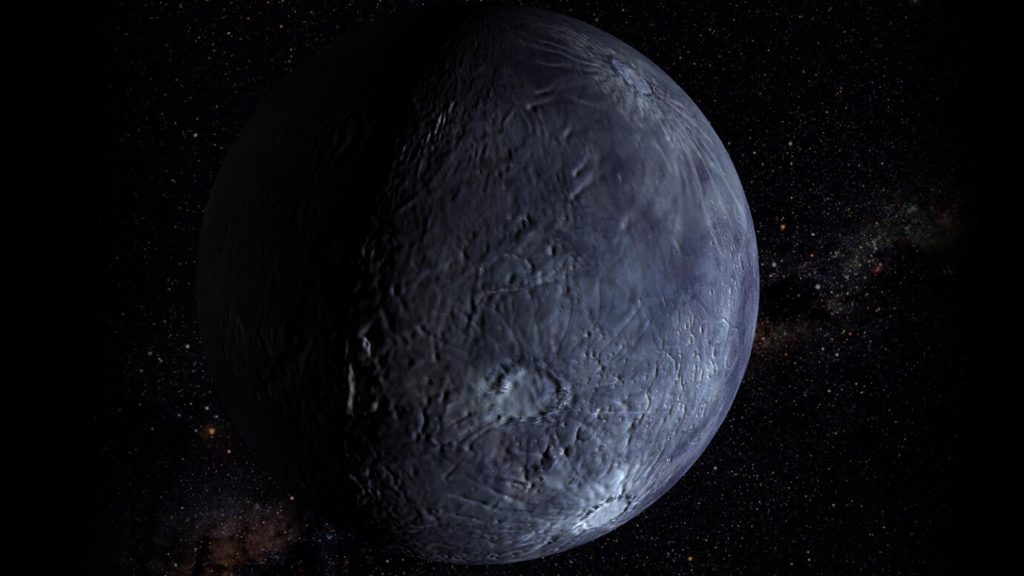The Kuiper Belt’s dwarf planet Quaoar hosts an impossible ring
Warning: Undefined array key 0 in /home/www/csgykj.com/wp-includes/media.php on line 779
Warning: Undefined array key 0 in /home/www/csgykj.com/wp-includes/media.php on line 785
Warning: Undefined array key 1 in /home/www/csgykj.com/wp-includes/media.php on line 785
Warning: Undefined array key 0 in /home/www/csgykj.com/wp-includes/media.php on line 787
Warning: Undefined array key 1 in /home/www/csgykj.com/wp-includes/media.php on line 787
Warning: Undefined array key 0 in /home/www/csgykj.com/wp-includes/media.php on line 790
Warning: Undefined array key 1 in /home/www/csgykj.com/wp-includes/media.php on line 790
Warning: Undefined array key 0 in /home/www/csgykj.com/wp-includes/media.php on line 779
Warning: Undefined array key 0 in /home/www/csgykj.com/wp-includes/media.php on line 785
Warning: Undefined array key 1 in /home/www/csgykj.com/wp-includes/media.php on line 785
Warning: Undefined array key 0 in /home/www/csgykj.com/wp-includes/media.php on line 787
Warning: Undefined array key 1 in /home/www/csgykj.com/wp-includes/media.php on line 787
Warning: Undefined array key 0 in /home/www/csgykj.com/wp-includes/media.php on line 790
Warning: Undefined array key 1 in /home/www/csgykj.com/wp-includes/media.php on line 790
Warning: Undefined array key 0 in /home/www/csgykj.com/wp-includes/media.php on line 779
Warning: Undefined array key 0 in /home/www/csgykj.com/wp-includes/media.php on line 785
Warning: Undefined array key 1 in /home/www/csgykj.com/wp-includes/media.php on line 785
Warning: Undefined array key 0 in /home/www/csgykj.com/wp-includes/media.php on line 787
Warning: Undefined array key 1 in /home/www/csgykj.com/wp-includes/media.php on line 787
Warning: Undefined array key 0 in /home/www/csgykj.com/wp-includes/media.php on line 790
Warning: Undefined array key 1 in /home/www/csgykj.com/wp-includes/media.php on line 790
Warning: Undefined array key 0 in /home/www/csgykj.com/wp-includes/media.php on line 779
Warning: Undefined array key 0 in /home/www/csgykj.com/wp-includes/media.php on line 785
Warning: Undefined array key 1 in /home/www/csgykj.com/wp-includes/media.php on line 785
Warning: Undefined array key 0 in /home/www/csgykj.com/wp-includes/media.php on line 787
Warning: Undefined array key 1 in /home/www/csgykj.com/wp-includes/media.php on line 787
Warning: Undefined array key 0 in /home/www/csgykj.com/wp-includes/media.php on line 790
Warning: Undefined array key 1 in /home/www/csgykj.com/wp-includes/media.php on line 790
Warning: Undefined array key 0 in /home/www/csgykj.com/wp-includes/media.php on line 811
Warning: Undefined array key 1 in /home/www/csgykj.com/wp-includes/media.php on line 811
Warning: Undefined array key 0 in /home/www/csgykj.com/wp-includes/media.php on line 70
Warning: Undefined array key 1 in /home/www/csgykj.com/wp-includes/media.php on line 71
Warning: Undefined array key 0 in /home/www/csgykj.com/wp-includes/media.php on line 70
Warning: Undefined array key 1 in /home/www/csgykj.com/wp-includes/media.php on line 71

The dwarf planet Quaoar has a ring that is too big for its metaphorical fingers. While all other rings in the solar system lie within or near a mathematically determined distance of their parent bodies, Quaoar’s ring is much farther out.
“For Quaoar, for the ring to be outside this limit is very, very strange,” says astronomer Bruno Morgado of the Federal University of Rio de Janeiro. The finding may force a rethink of the rules governing planetary rings, Morgado and colleagues say in a study published February 8 in Nature.
Quaoar is an icy body about half the size of Pluto that’s located in the Kuiper Belt at the solar system’s edge (SN: 8/23/22). At such a great distance from Earth, it’s hard to get a clear picture of the world.
So Morgado and colleagues watched Quaoar block the light from a distant star, a phenomenon called a stellar occultation. The timing of the star winking in and out of view can reveal details about Quaoar, like its size and whether it has an atmosphere.
The researchers took data from occultations from 2018 to 2020, observed from all over the world, including Namibia, Australia and Grenada, as well as space. There was no sign that Quaoar had an atmosphere. But surprisingly, there was a ring. The finding makes Quaoar just the third dwarf planet or asteroid in the solar system known to have a ring, after the asteroid Chariklo and the dwarf planet Haumea (SN: 3/26/14; SN: 10/11/17).
Even more surprisingly, “the ring is not where we expect,” Morgado says.
Known rings around other objects lie within or near what’s called the Roche limit, an invisible line where the gravitational force of the main body peters out. Inside the limit, that force can rip a moon to shreds, turning it into a ring. Outside, the gravity between smaller particles is stronger than that from the main body, and rings will coalesce into one or several moons.
“We always think of [the Roche limit] as straightforward,” Morgado says. “One side is a moon forming, the other side is a ring stable. And now this limit is not a limit.”
For Quaoar’s far-out ring, there are a few possible explanations, Morgado says. Maybe the observers caught the ring at just the right moment, right before it turns into a moon. But that lucky timing seems unlikely, he notes.
Maybe Quaoar’s known moon, Weywot, or some other unseen moon contributes gravity that holds the ring stable somehow. Or maybe the ring’s particles are colliding in such a way that they avoid sticking together and clumping into moons.
The particles would have to be particularly bouncy for that to work, “like a ring of those bouncy balls from toy stores,” says planetary scientist David Jewitt of UCLA, who was not involved in the new work.
The observation is solid, says Jewitt, who helped discover the first objects in the Kuiper Belt in the 1990s. But there’s no way to know yet which of the explanations is correct, if any, in part because there are no theoretical predictions for such far-out rings to compare with Quaoar’s situation.
That’s par for the course when it comes to the Kuiper Belt. “Everything in the Kuiper Belt, basically, has been discovered, not predicted,” Jewitt says. “It’s the opposite of the classical model of science where people predict things and then confirm or reject them. People discover stuff by surprise, and everyone scrambles to explain it.”
More observations of Quaoar, or more discoveries of seemingly misplaced rings elsewhere in the solar system, could help reveal what’s going on.
“I have no doubt that in the near future a lot of people will start working with Quaoar to try to get this answer,” Morgado says.
